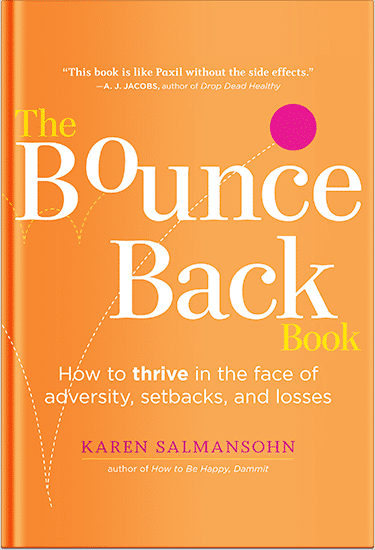 Breast reconstruction is more than a medical procedure—it’s often part of emotional healing after a mastectomy. For many women, restoring breast shape means regaining a sense of balance, confidence, and normalcy in daily life.
Breast reconstruction is more than a medical procedure—it’s often part of emotional healing after a mastectomy. For many women, restoring breast shape means regaining a sense of balance, confidence, and normalcy in daily life.
Yet one of the biggest challenges lies in choosing the right surgical option. With several techniques available, each offering unique benefits, understanding the possibilities becomes the first step toward making an informed decision.
In Denver, women exploring reconstruction often find that procedures vary not just in technique, but also in recovery time, results, and how natural the outcome feels.
So, what are the main approaches, and how do they compare? Here’s a clear guide to the most common types of breast reconstruction and what each involves.
Implant-Based Reconstruction
One of the most common reconstruction methods involves the use of breast implants. This option rebuilds shape using either saline or silicone implants, which are usually placed beneath the chest muscle for support and a natural look.
Traditionally, implant-based reconstruction is completed in two stages. First, a tissue expander is inserted to gently stretch the skin and create room. Once healing progresses, the expander is replaced with a permanent implant.
While highly effective and widely used, this approach often requires more than one surgery, meaning longer recovery time and multiple steps before the final result is achieved.
Direct-to-Implant Reconstruction
Advances in technique have made it possible to skip the expander stage altogether. According to experts in direct-to-implant breast reconstruction in Denver, in this surgery, the final implant is placed at the time of mastectomy. This approach reduces the need for multiple surgeries, shortens recovery time, and provides immediate results.
Working with board-certified surgeons is essential here, since not every patient is an ideal candidate. Professional evaluation considers factors like skin quality, cancer treatment history, and overall health.
Clinics such as OnPointe Plastic Surgery emphasize careful assessment and personalized plans, ensuring that the outcome is safe, natural, and aligned with patient expectations.
Autologous Tissue Reconstruction
For some women, implants are not the preferred option. Autologous reconstruction, often called “flap” surgery, uses the patient’s own tissue—commonly taken from the abdomen, back, or thighs—to create the breast shape.
The advantage of this method is a more natural feel and the ability for the reconstructed breast to change with body weight. However, it involves longer surgery and recovery times, since tissue is moved from one area of the body to another.
Women considering this option should be prepared for more extensive recovery, but may find the results feel the most natural in the long term.
Combination Approaches
In certain cases, surgeons may recommend combining breast implants with autologous tissue. This approach brings together the advantages of both methods, offering added volume from the implant while maintaining the softness and natural contour of your own tissue.
For patients who may not achieve their desired outcome with a single technique, this hybrid method can be especially beneficial.
For example, women with limited tissue for flap reconstruction may still gain natural-looking results when an implant is added for balance. On the other hand, those seeking more fullness after tissue reconstruction may find that implants provide the enhancement they want.
Though less common than single techniques, combination procedures highlight how personalized planning truly matters. Every body is different, and blending methods allows surgeons to create results that are both natural and tailored to individual needs.
What to Expect in the Recovery Process
Recovery after breast reconstruction varies based on the method chosen. Understanding what to expect can make the journey smoother and less stressful. Here’s a closer look:
-
Implant Procedures:
- Usually involves shorter hospital stays.
- Most patients can return to normal daily activities sooner.
- Pain and swelling are often mild and manageable with prescribed medication.
-
Flap Surgeries (Using Tissue from Another Part of the Body):
- Require longer recovery periods.
- Both the chest and the donor site need careful monitoring.
- Physical activity is limited for several weeks to allow proper healing.
-
Follow-Up Care:
- Regular visits with your surgeon help monitor progress and adjust care.
- Guidance is provided for physical activity, scar management, and emotional well-being.
- Emotional support is as important as physical healing, making ongoing medical care essential.
Recovery is a gradual process, and patience combined with proper support ensures the best results, both physically and emotionally.
Making the Right Decision
Choosing between reconstruction methods is rarely simple. Each approach carries trade-offs in terms of surgery length, recovery time, and how natural the results may feel. That’s why a consultation with a board-certified plastic surgeon is the most important step in the process.
A surgeon looks beyond the procedure itself. They evaluate your health, your goals, and how you want to live day to day. This helps create a plan that feels safe, realistic, and aligned with your vision. Key factors to consider include:
- Health status: Overall health can affect eligibility for certain procedures.
- Lifestyle: Active or demanding routines may suit one method over another.
- Desired results: Some techniques offer a more natural shape and feel.
Personalized care ensures safer outcomes and results that truly support confidence and quality of life.
Final Thoughts
Breast reconstruction is a deeply personal decision, and no single option fits everyone. From implants to flap procedures, each approach has its strengths and considerations. In Denver, access to skilled professionals means women can explore choices that match their health needs and personal goals.
When guided by expert care, reconstruction becomes more than surgery—it becomes a step toward restoration, balance, and renewed confidence.
P.S. Before you zip off to your next Internet pit stop, check out these 2 game changers below - that could dramatically upscale your life.
1. Check Out My Book On Enjoying A Well-Lived Life: It’s called "Your To Die For Life: How to Maximize Joy and Minimize Regret Before Your Time Runs Out." Think of it as your life’s manual to cranking up the volume on joy, meaning, and connection. Learn more here.
2. Life Review Therapy - What if you could get a clear picture of where you are versus where you want to be, and find out exactly why you’re not there yet? That’s what Life Review Therapy is all about.. If you’re serious about transforming your life, let’s talk. Learn more HERE.
Think happier. Think calmer.
Think about subscribing for free weekly tools here.
No SPAM, ever! Read the Privacy Policy for more information.
One last step!
Please go to your inbox and click the confirmation link we just emailed you so you can start to get your free weekly NotSalmon Happiness Tools! Plus, you’ll immediately receive a chunklette of Karen’s bestselling Bounce Back Book!


 Breast reconstruction is more than a medical procedure—it’s often part of emotional healing after a mastectomy. For many women, restoring breast shape means regaining a sense of balance, confidence, and normalcy in daily life.
Breast reconstruction is more than a medical procedure—it’s often part of emotional healing after a mastectomy. For many women, restoring breast shape means regaining a sense of balance, confidence, and normalcy in daily life.